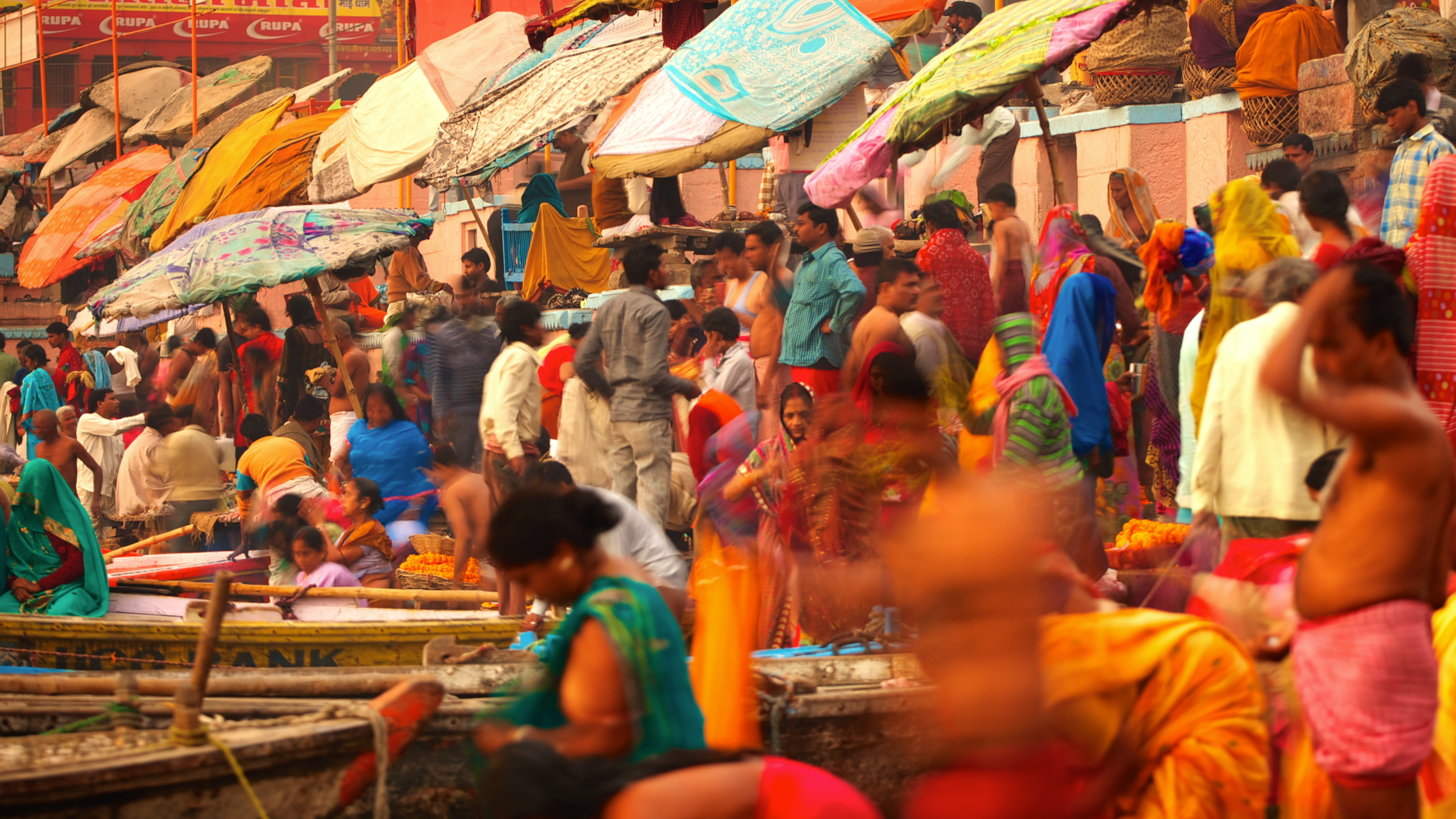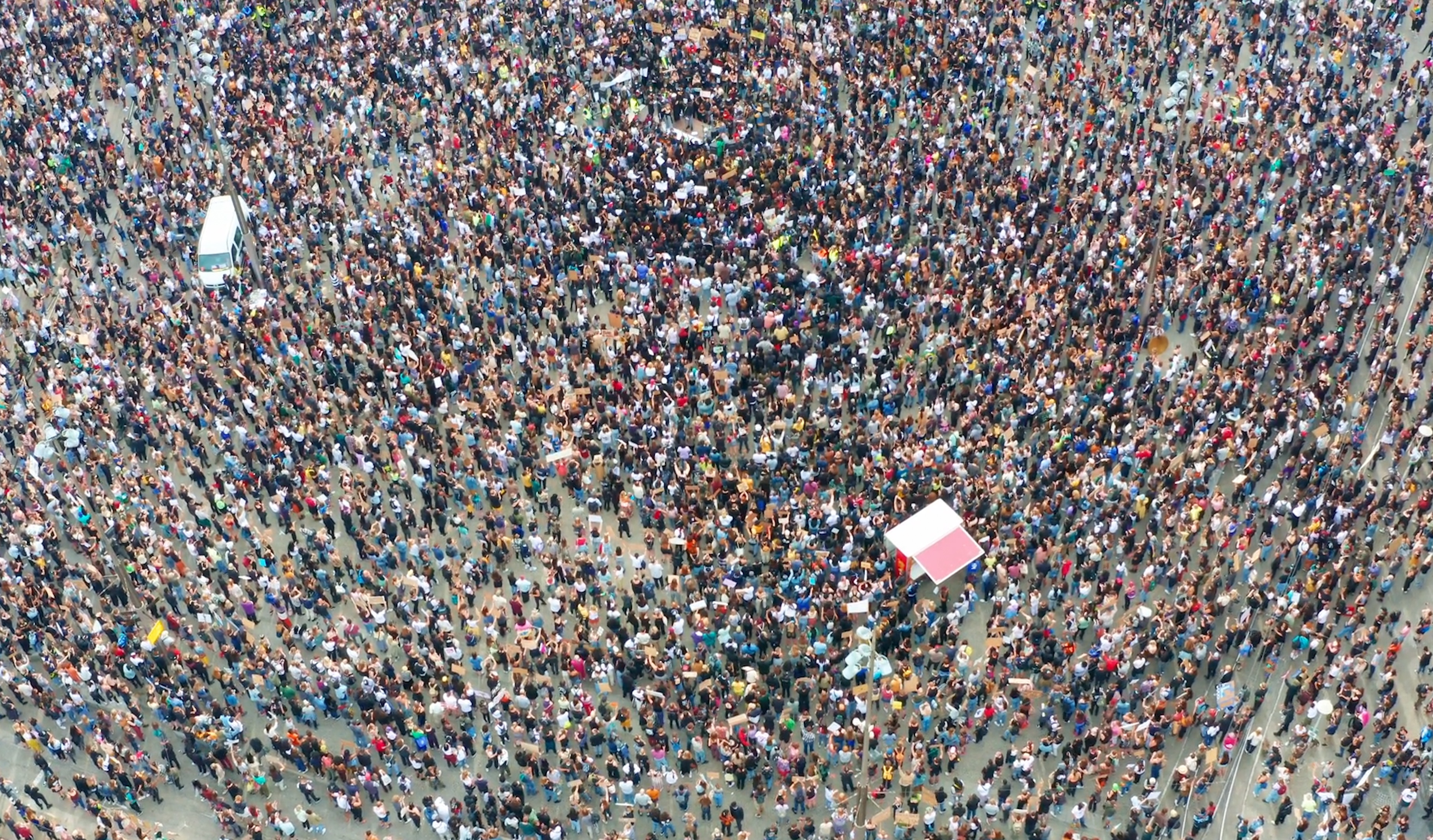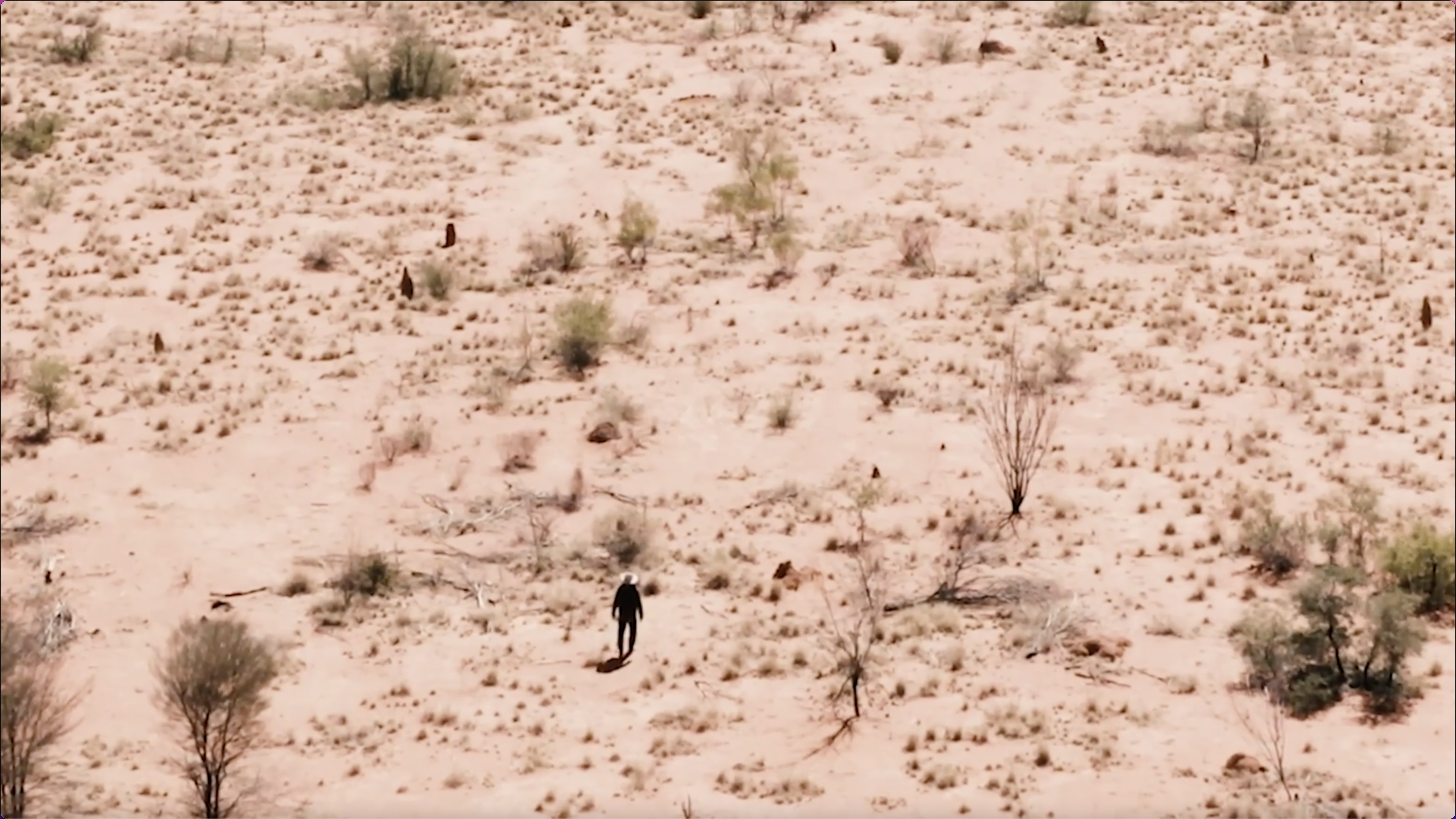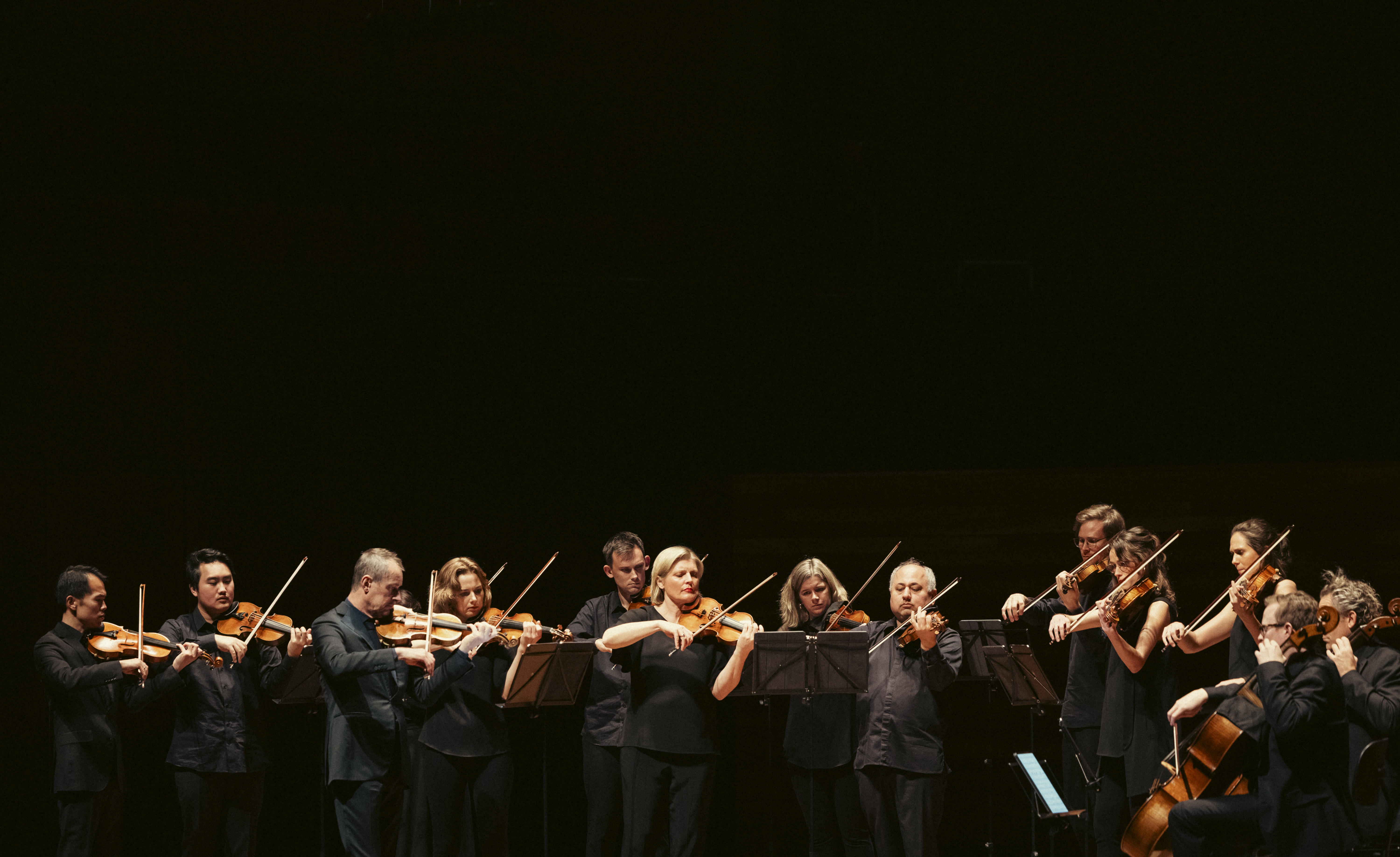
I was living in Rome when the request came to write this essay. Tourists had just begun to return properly for the first time since the Covid-19 pandemic had hit two years earlier. All through winter, the empty streets, the eerie silence; and yet there had been something precious about being in this most ancient city, face to face with art from every age without throngs impeding vision. The weather was unseasonally warm and by the time the streets had reached full capacity it was not yet summer, but temperatures were over 30 degrees celsius. Venturing into those hot, dusty, crowded streets was daunting.
How different from Pythagoras’ “rough sphere” two and a half thousand years ago the planet must look now from space. Strung seemingly end-to-end in lights as our cities metastasise, skeins of pollution increasingly visible. Everything we see on Earth is made from it: plants synthesised; minerals disgorged, smelted and recast, rusted and discarded. There are now almost eight billion people on earth, twice as many as 60 years ago. In 500BC, the world population is estimated to have been around only 50 million.
Did we invent industrial agriculture to cope with this explosion in numbers? Or is its invention the cause? To feed this many people we are using methods that destroy other species faster than the manic rate at which ours multiplies. We are living the crisis we were warned about for so long. Homo sapiens, this most intelligent, destructive, avaricious, and creative species.
Set to Richard Tognetti’s soaring, anxious choral works eKstasis, Battle – Crowd Chorale, the opening images of The Crowd & I hover between astonishingly beautiful and deeply disturbing. How elegant the patterns of giant crops over cleared land, the smartly costumed pesticide sprayers moving along the ranks of our future food in their efficient, toxic choreography.
Set to Richard Tognetti’s soaring, anxious choral works eKstasis, Battle – Crowd Chorale, the opening images of The Crowd & I hover between astonishingly beautiful and deeply disturbing.
“Maybe a third of the show is taken from cinematographer Jon Frank’s own archive, slightly reworked,” director Nigel Jamieson tells me. “The rest is found. We acquired footage through relationships made with filmmakers around the world; we also spent many, many hours seeking licensing permissions”.
Originally titled The Crowd, and first performed for the 2010 Festival Maribor in Slovenia, it was “a rough diamond,” says Tognetti. “We polished it in 2013 to perform with ANAM [the Australian National Academy of Music] at the Melbourne Festival. Then it became a sort of lockdown thing. It’s not a blockbuster. It’s out of the ordinary. It’s art for art’s sake.”
The show acquired the second word in its title in 2022. “It’s a play on words,” says Tognetti. And I thought of Don de Lillo’s “single floating eye of the crowd.” His “mass of people turned into a sculptured object … fortified by the blood of numbers.” (Mao II by Don de Lillo, 1991)

The Crowd & I is a lot of things. It’s immersive theatre. More than 30 musicians playing in front of a giant screen, in and of the image, enhancing it and enhanced by it, Tognetti’s energetic, charismatic performance counterpointing those onscreen. “They are part of the image, lit dynamically,” Jamieson insists. “So that sense of physicality is retained.”
It’s another multidisciplinary production in the vein of the ACO’s Luminous, made with photographer Bill Henson in 2011. It’s a cinematic meditation, a visual-aural feast delivered by the living body. Six singers from The Song Company bringing voice, that most precious of instruments. In an interview with The Saturday
Paper earlier this year, Tognetti cited Tarkovsky’s lyrical sci-fi epic Solaris, first discovered when he was 12, as the work which made him realise “the power of music to lead in a film. … It’s about hypnotising the audience into a dreamlike state so you can start telling your story.”
Tognetti has re-crafted the music program since its 2013 iteration, working his usual range of contemporary to classical, from the lush orchestral works of Sibelius and Beethoven to the spare and abstract such as Jón Leif’s String Quartet No.3, Op.64 “El Greco” with its ominous, plodding double bass soothed by violins; and Morton Feldman’s poignant, disconcerting, Three Voices.
Juxtaposition becomes apposite: football is played to polka, a match loss denoted with the stately mournful strings of Sibelius’s ‘Scene with Cranes’ from Kuolema. The camera penetrates the crowd and roams among individual faces, revealing the stadium as a theatre of euphoria and catastrophe, worthy of a German Expressionist film. The scenes are from Frank’s oldest footage but perhaps the most timeless. There is an innocence to them as well, if one thinks of the events held in the Colosseum millenia ago where audiences numbered up to 60,000 and often stayed all day, the games ramping up to scenes of blood-soaked terror
and atrocity.
Watching a film and listening to music change when they’re experienced with a group. Who could not want “the energy of the concert hall”, as Jamieson put it, in joyful anticipation of returning post-Covid for The Crowd & I. “Being part of that collective magic, holding your breath.” A living-room sound system cannot compete with concert hall acoustics delivering the dynamic range of a Chopin nocturne. Music was composed to be shared. Humans sought food, built shelter, found mates, then gathered to exchange stories, with music. This is how it has always been.
Even in silence, we seek company. Meditating 10 hours a day with hundreds of people at a Vipassana retreat is completely different to meditating alone, even if speech is banned and eyes closed. Our brains are responding to body heat, the barely perceptible clicks of eyelids blinking, breath moving through nostrils, myriad subtle smells. It is not prayer, and not common. But it is a collective effort to quiet, refuting the assumption that bodies must manifest their presence with movement and noise.
If I weren’t an atheist I might attest to the power of collective prayer; concentrated communal goodwill must do something. Religious pilgrimages are not about the destination, the icon; nor are they about the journey, so much as its sharing. No athlete swam their personal best alone in the pool. It is the numinous brainwave, the changed atmosphere around a group of bodies. This power is corruptible: religious leaders and politicians are at their most dangerous when skilled in manipulating it.
Music was composed to be shared. Humans sought food, built shelter, found mates, then gathered to exchange stories, with music. This is how it has always been.
Surrounded by people we are always imagining, anticipating, preparing and receiving communication, processing a multitude of sensory input. A person whose brain is wired along the autism spectrum does this differently: more sedulously, equanimously and therefore, when that input increases, with more difficulty, due to sheer overload. Crowds are not democratic. A certain kind of strength does increase with numbers: it threatens and repels the vulnerable.
What happens to gender in a crowd? The physical strength of men, their ownership of public space, tends to make crowds more attractive to them. What energy emerges when we disinhibit and unleash? Kindness, hugging and love? Such contrast between a queer dancefloor and a heterosexual rock concert where masculinity dominates, dancing along a knife-edge from fun to fighting. Tognetti quotes Nietzsche: “Madness is something rare in individuals, but in groups, parties, peoples and ages, it is the rule.”
And what happens to race? And when does a group become a crowd become a mob? Tognetti also mentions James Surowiecki’s The Wisdom of Crowds, where collective intelligence and interdependence are considered some of humanity’s most powerful motivating forces. The Black-led Black Lives Matter protests all over the world were as peaceful as any anti-war rally, as that essentially was what they were. A consciousness-raising exercise whose effect will hopefully last forever. White mobs on the other hand have often gathered for violent persecutory purposes. Behind the rioters on the streets of Cronulla, an Anglo-Australian Prime Minister who denied the existence of racism. Behind the police arresting them, a corporate world whose leaders are 97 per cent Anglo-Celtic male.
Crowds are not democratic. A certain kind of strength does increase with numbers: it threatens and repels the vulnerable.
One hundred years ago, Australia was the most urbanised nation on the planet. We cultivated a bucolic mythos – still do – but in many parts of the continent the land had already been pummelled by European farming techniques into dust. Impoverished people poured into the cities; many sought work on the Hungry Mile, just 500 metres from the ACO’s home at Walsh Bay. Some, like Jerry MacNunn in Ruth Park’s Swords and Crowns and Rings, “felt as if he had dropped into a sea of pumice. … The city noises clacked in his ears, his head. He couldn’t think. Everything was wrong.” (Swords and Crowns and Rings by Ruth Park, 1977)
Others, like “The Nun”’s younger companion, Jackie, had an altogether different reaction. “In a daze of delight, he walked around the streets, down to the Darling Harbour wharves, lined with ships like moored churches and palaces. Behind high tin fences men laboured; he could hear steam panting, winches squealing, clangs and rumbles, distant shouted orders. … The lights fascinated him, the topaz and diamonds, the red glare and the foggy pearl. There were lights high up in the air as if they were on poles or mountains, and lights deep down in valleys — dazzling clots and strings and nebulae. The city seemed to sprawl everywhere. As far as he could see there was no darkness ungemmed by windows, street lamps, the little searchlights of moving cars. He thought, ‘Oh, God, this is for me!’”
Since then, the proliferation of megalopolises: Cairo, Shanghai, Mexico City, Dhaka. New York, Jakarta, London, Seoul. All throughout the 20th century, capitalism continued apace. Forests are felled by crops, much of which are dumped when the prices set by corporate interests are not worth the harvest. Small rural economies degrade. At rush hour in Delhi, commuters are beaten off overcrowded trains with sticks, the lucky clustering to the running boards like molluscs; in Tokyo they are pushed into carriages like fish into jars. “The Crowd & I is very much about the way humanity has moved over the last 30 years, into these huge metropolises,” says Jamieson. “It’s about that proliferation and intensity, the accelerating speed of life and how in places, people have lost that sense of connectedness.”
Yet like Jackie, some people forced into the city embrace its excitement, finding freedom in becoming invisible. “He was just part of a Sydney crowd.”
Returning home to a city of empty streets was a shock. Why weren’t people out in celebration as they had been in Europe? Even before this pandemic, gathering in Sydney’s public spaces had become increasingly difficult due to restrictive licensing laws, public health and safety regulations and heavy policing. In the supermarket, machines bark at you when your shopping bag is in the wrong spot. In the shopping mall, signs tell you not to overtake on the escalator. I went down to Chinatown, longing for the jostle of crowds but even those streets were quiet. Sometimes it feels easier to just go home.

People with stable housing and jobs that could continue in the private realm were best equipped to ride out the pandemic. Artists dependent on interaction with the public were devastated. “I had a busy couple of years but nothing got up. It wasn’t the flavour of the times,” Jamieson remarks with grim facetiousness. Bungul, co-directed with Yolngu elder Don Wininba Ganambarr and employing thousands of performers, was programmed for Perth Festival but was cancelled at the last minute due to the vicissitudes of border policies.
“The disappointment is quite intense. I feel quite emotional now just talking to you,” Jamieson says. “It’s just weird not being with people. Making art for me is a physical, sensual experience. It’s social too, you know, going to the pub together after working all day having a few drinks and throwing ideas around. I love all the people involved in productions and all that enthusiasm. I love the volunteers. … Then suddenly we’re masked and looking at our fellow humans as potential sources of infection.”
Both Jamieson and Tognetti are quick to point out they personally have been luckier than most, but they are part of a community, an industry that is struggling. “It’s really really really bad,” says Tognetti. “Even though things supposedly feel normal, they’re not. People are being asked to play for nothing and they are, because they’re desperate. Attendance figures are down. So I want to get the message out: please buy a ticket to something!”
The ACO has been at Pier 2/3 since April. They are exulting in the space. “There’s a sense of relief that we have engagement again from a federal platform,” says Tognetti. “The Morrison government was very disheartening.” We have plenty of reasons for optimism now.
In the chapter “Country”, filmed by Jon Frank in the Northern Territory’s Tanami Desert, a Warlpiri elder walks with his back to us across red earth dotted with spinifex, spiked with small trees and termite mounds. It’s a long sequence, the camera lifting away from the figure who continues walking below, seemingly oblivious. Soon the landscape fills the screen in all its intricate, subtle beauty, the man so small he is barely decipherable, his upright figure becoming another thing growing out of the ground. He isn’t walking away from us really; he is walking towards something, perhaps someone. His solitude is temporary.
The Crowd & I tours to Canberra, Melbourne, Sydney and Brisbane, 6-15 August. Click here to book tickets.
